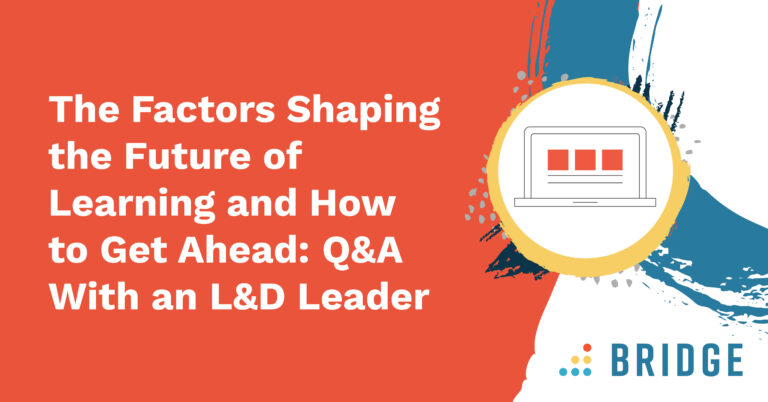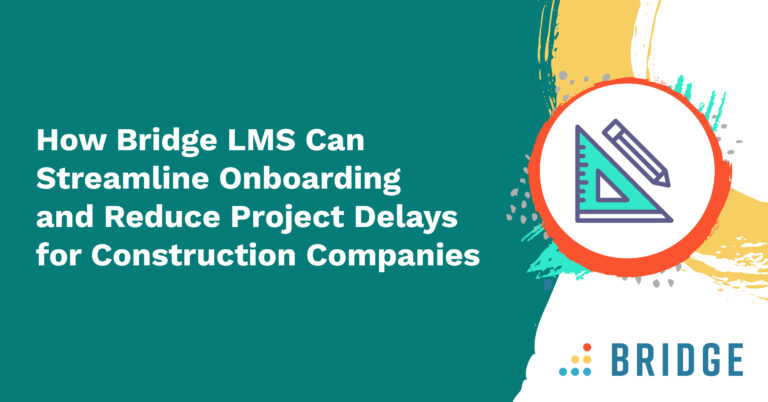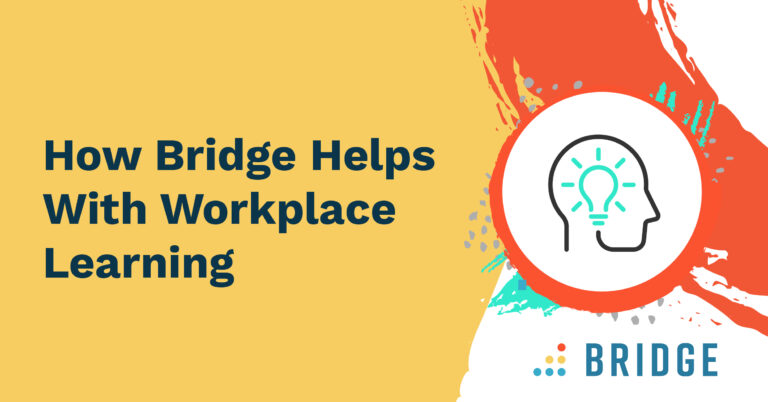When you’re responsible for demonstrating the value of learning and development, you need to know where to focus your efforts. That’s why staying ahead of the latest industry trends is key.
I sat down with Bridge’s newly appointed CEO, Liam Butler, to discuss some of the factors shaping the L&D industry and explore his vision for the future.

With over two decades of experience in the learning and talent management space, Liam has a proven track record of supporting strategic business growth and driving revenue for customers. Before joining Bridge, he served as Chief Revenue Officer at SumTotal Systems and most recently led corporate and investor services at Fosway Group.
Read below for a roundup of the trends that could shape your strategies beyond 2025 and learn how you can take action.
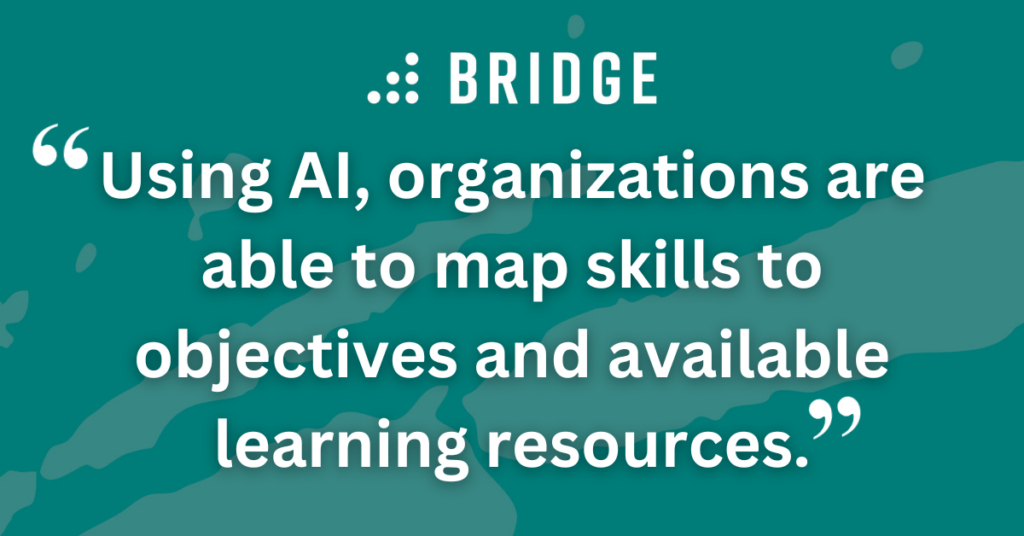
Q: Welcome, Liam! Let’s Start With Trends. What’s Reshaping L&D in 2025 and Beyond?
A: There's a lot of ongoing talk about the practical uses of AI within learning and development, and this seems to be focused on two use cases.
Firstly, organizations are adopting AI to generate eLearning content. They want a solution to create learning resources on the fly and for subject matter experts to create useful, viable content efficiently.
The other area for which there's a big push in the industry is using AI to build a skills taxonomy. This was an ongoing challenge for many organizations, but by using AI, they can map skills to objectives and available learning resources.
RELATED AI READING | ‘How to Use AI With Your Learning Management System’
Q: How Is the Role of Learning Technology Changing?
A: There's an increasingly strong demand for ease of use within software—especially within the mid-market.
Over the years, organizations have wanted a high degree of configurability in their solutions. Although this seems positive, it often creates complex and overwhelming systems from a management and administrative perspective, making it hard to use the system effectively.
When software is easy to use, it's beneficial for admins and often results in lower maintenance and operational costs. That's usually the difference between purchasing a system where learning is a core function versus an add-on too.
When learning is a core part of a provider's offering, you’re more likely to get greater usability and more features that add value. You also get uniformity of reporting and the ability to serve content with a better experience for the end user. Another thing that learning platforms like Bridge do very well is skills mapping.
All of these features make it possible for employees to improve their current skills and advance their careers.
DISCOVER MORE L&D TRENDS | ‘The Trends That Will Shape L&D in 2025 and Beyond’
Q: Implementing Skills Development Programs Seems a Common Challenge. How Do You Think Technology Can Help?
A: We've discussed building a skills framework as a practical use case for AI. It's a valuable way to connect skills to training and organizational objectives.
I also think that L&D teams need to be aligned with the organization and its strategic goals to get the most out of a solution. Within learning and development, we tend to focus on the outcome of training and development programs. We look at the missing capabilities and skills people need for their roles, then connect that to training and development.
But we also need to consider the broader perspective on skills, and it's the one that HR and the wider business looks at.
It's about managing risk through talent resourcing, identifying people within the organization for potential vacancies, and filling gaps based on the best match to plug into roles. More holistically, a broader approach to skills looks at whether you have the talent inside the organization to backfill, or you need to fill positions externally.
When an organization says it wants to build a skills framework, it's important to be aligned on these initiatives and for L&D to have a common understanding with the business so they're clear about strategy.
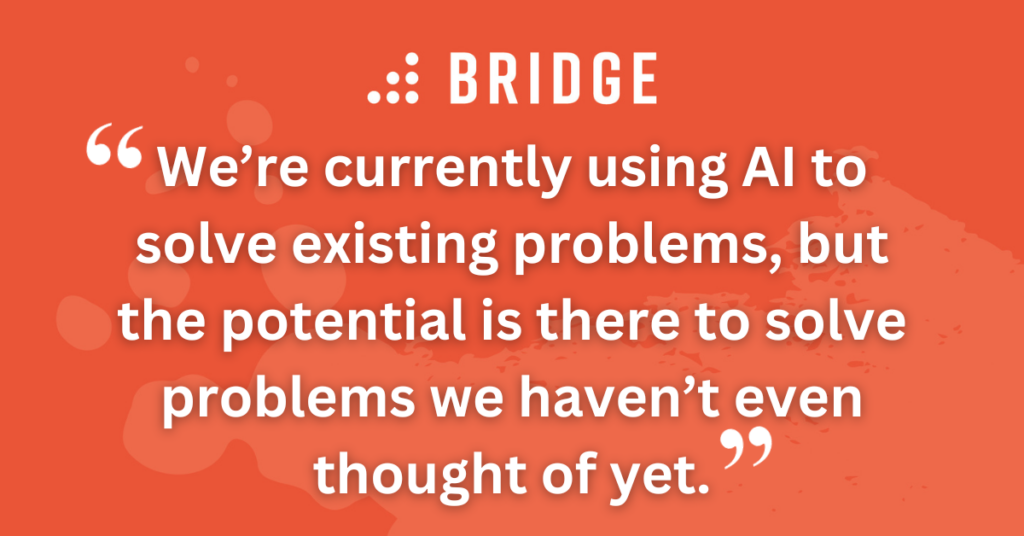
Q: What Advice Do You Have for L&D Professionals Under Pressure to Show the Value of Their Investments?
A: There are two different perspectives here. Firstly, compliance training remains fundamental, and I'd argue that it's easy to show the underlying need for compliance within the organization.
At a basic level, that's employee onboarding, health and safety training, all the way up to high-stakes, regulatory environments. Every organization faces financial risks, reputational damage, and regulatory requirements. That's very easy to measure, and you can make a clear argument about return on investment.
The other side is showing the return on investment through employee development. I’d argue that asking for the ROI of employee development is like asking for the ROI of sending your kids to school. It’s inherently valuable and necessary, and any organization that wants to improve its talent and make them productive needs to invest in training and development.
If you've got an underperforming workforce, it impacts your business, and if someone isn’t performing, you need to develop them to get them up to the right level. You need clear insights on what skills people possess and whether they’re a good fit for the jobs they’re doing.
ADDITIONAL ROI READING | ‘Prove the ROI of Upskilling and Employee Development With These L&D Facts and Stats’
Q: How Do You See Learning Technology Changing in the Near Future?
A: In our industry, predictive learning and machine learning have been available within our software and part of what we're able to do for years. It's recently become part of the vernacular—it's accessible to everyone, and people are excited about it.
AI is more readily accessible now, and pretty much everyone can use it. That's exciting because these use cases are expanding.
The current focus seems to be saving money on content generation and the simplicity of creating skills taxonomies—but these are obvious use cases. We’re currently using AI to solve existing problems, but the potential is there to solve problems we haven’t even thought of yet.
This progress is inevitable, and AI will enhance productivity and streamline our processes, but it won't replace human creativity. We'll always need human insight and innovation.
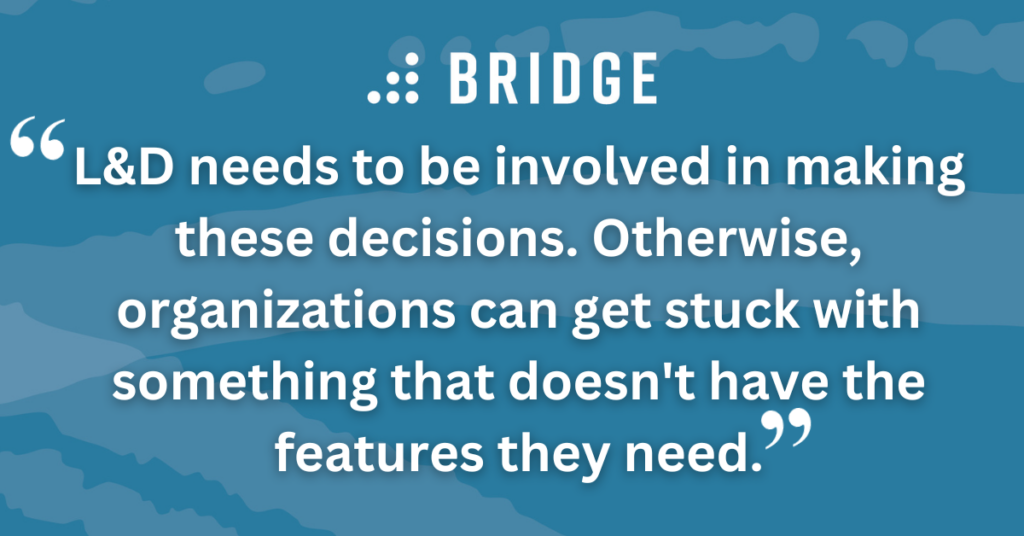
Q: Do You Have Any Final Advice You Could Share With L&D Professionals?
A: When buying a system, I would tell any organization to storyboard their most common use cases and see how a potential provider handles everyday tasks.
A lot of systems demo well, but a demo isn’t the same thing as real life. You need to look at your goals, challenges, and tasks, and how well a potential solution will meet them—that’s what’s going to impact your day-to-day.
L&D needs to be involved in making these decisions. Otherwise, organizations can get stuck with something that doesn’t have the features they need.
Take platforms like Bridge, for example, where learning and development are woven into the DNA. Using a dedicated learning platform means your organization is supported by knowledge and industry-leading features like AI-powered skills mapping and learning analytics.
LOOKING FOR A LEARNING PLATFORM? READ THIS! | ‘The Best LMSs on the Market Today’
Prove the Value of L&D With Bridge LMS
Explore the platform or get a demo to see how Bridge’s AI-powered skills development solution can help you scale employee development programs and turn training into tangible business results.
